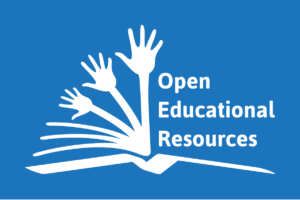Blog Post #4: Exploring Open Pedagogy and Open Educational Resources (OER)
 What is Open Pedagogy?
What is Open Pedagogy?
Open Pedagogy is an educational approach that can emphasize collaboration, transparency, and student centered learning. Unlike traditional teaching methods, which can often rely on instructor or teacher-led content, Open Pedagogy goes beyond that and encourages active participation in the creation and sharing of knowledge encouraging students to be more engaged rather than just being a listener. This approach empowers students to contribute in meaningful ways to their own learning experiences rather than passively receiving information from their instructor. By engaging with Open Pedagogy, both educators and students take on the roles of co-creators which can foster a sense of ownership of the knowledge to the students, and often can gain the skills of real-world application in what they are learning. The last big point of Pedagogy is the mission in making education more available for everyone and resource friendly, this would allow for everyone to get the education they desire without being extremely expensive.
The Role and Impact of OER
Open Educational Resources (OER) are freely accessible teaching and learning materials that can be used, adapted, and shared with anyone. There are many advantages of using OER’s they reduce financial barriers for students, promote lifelong learning, and encourage the adaptation of materials to better suit diverse learning needs. By incorporating OER’s into educational practices, institutions and teachers can create more inclusive and accessible learning environments for all of their students. OER’s can also contribute to equity in education by ensuring that high-quality resources for learning are available to everyone, regardless of socioeconomic background or economic income.
Global Trends in OER
The adoption of OER is a growing global movement, with many countries and institutions investing in open-access initiatives.
- Increased Adoption: Many countries are incorporating OER into their educational systems to reduce costs and improve access to quality education.
- Policy Develo
pment: Governments and institutions are developing policies that encourage or mandate the use of OER, ensuring that educational resources are accessible to all students. - Collaboration and Sharing: There is a growing trend towards international collaboration in creating and sharing OER, enabling the exchange of knowledge and resources across borders.
- Focus on Inclusivity: OER initiatives are increasingly focused on creating resources that are inclusive and culturally relevant, addressing the diverse needs of learners worldwide.
This list by Joshua Hotchin summarizes it perfectly. The use of OER is growing and will continue to grow, this is as people recognize the plethora of benefits within the learning style. These trends show the rising use and importance of OER and how they can create a more equal and inclusive environment for all learners.
Understanding Creative Commons Licensing
Creative Commons (CC) Licensing plays a crucial role in the responsible use and distribution of OER. By understanding the different CC licenses, educators and learners can legally and ethically share, modify, and distribute content all around the world legally and ethically. “There are several types of Creative Commons licenses, ranging from the most permissive (allowing almost any use) to more restrictive (limiting how the work can be used). (Joshua Hotchin).” CC’s can ensure that others can freely use and modify all the work while maintaining proper credibility. This fosters a culture of openness and collaboration in education.

Attributes of Open Pedagogy
Key attributes of Open Pedagogy include collaboration, transparency, and student-centered learning. These principles can be implemented through co-created assignments, open-access projects, and peer-reviewed contributions.
Open Pedagogy is characterized by several key attributes that distinguish it from traditional teaching methods. These include:
- Student-Centered Learning: Students are actively involved in the learning process, often contributing to the creation and sharing of knowledge.
- Collaboration and Sharing: Open Pedagogy encourages collaboration between students, educators, and the broader community, fostering a culture of sharing and mutual support.
- Use of OER: The integration of Open Educational Resources is central to Open Pedagogy, allowing for the adaptation and customization of learning materials.
- Transparency: Open Pedagogy promotes transparency in teaching and learning, with a focus on open access to educational materials and processes.
- Empowerment: By involving students in the creation and dissemination of knowledge, Open Pedagogy empowers learners to take ownership of their education and contribute to the learning community.
This list by By Joshua Hotchin I believe summarizes it perfectly. My goal is to incorporate Open Pedagogy into my own educational practices. By doing this I can create a more inclusive learning environment where students all feel valued and engaged. This approach not only enhances critical thinking and creativity but also fosters a sense of community and shared responsibility for knowledge production within any given class I am in.